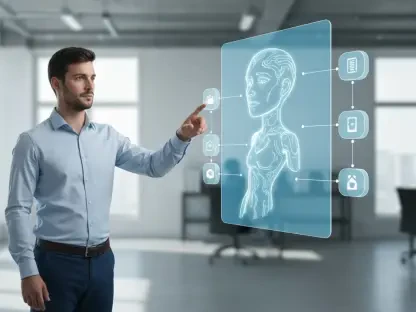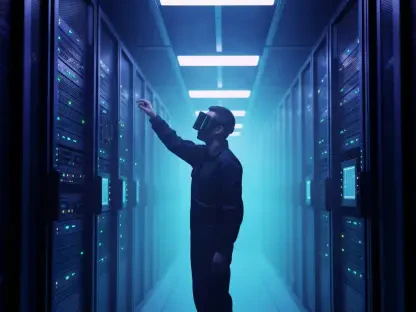Imagine generating a presentation in minutes with a simple prompt, or drafting an insight-filled proposal with accurate data, moments before a meeting with management. With regenerative AI, these tasks are easily achievable and, supposedly, very common.
Since the inception of artificial intelligence, the public’s primary fear has been that one day, AI will replace them in the workforce. Today, it seems these fears have come to fruition in many businesses worldwide, especially in their junior positions.
This article explores the profound and lasting mark artificial intelligence has made on multiple entry-level positions across industries.
The Use of AI Automation in Everyday Tasks
From a supplementary tool to a dominant force, it all started when OpenAI released its first models of Generative Pre-Trained Transformers, better known as GPT. A writing tool that generates comprehensive, accurate text in a flash.
This innovation encouraged students worldwide to start using AI platforms such as ChatGPT to assist with schoolwork. The progression from typing the prompt “What is the capital city of Germany?” quickly evolved to “Write a 2500-page essay about [insert topic],” sparking the age of mass AI use in daily life, especially in the office.
The realization of where AI could be applied spread from students to employees, to industry leaders, and CEOs. The transition from manual work to modern AI proved beneficial to many organizations.
Why the shift to AI automation?
Improved productivity through increased speed in task completion.
Multitasking capabilities across various departments.
Cost-effective AI use results in reduced manual labor needs.
24/7 availability with no need for breaks or downtime.
High accuracy rate due to vast data processing, precise algorithm, and continuous learning.
The use of large language models, such as ChatGPT, can provide these benefits through regenerative AI and AI automation. This allows users to automate tasks and processes that previously required human intelligence to conduct.
While the public was caught off guard by the drastic shift from relying on Google pages to accessing GPT bots for quick and accurate answers, industry researchers already saw the trend coming.
According to Burning Glass Institution and Harvard Business School Projects, more than 50 million jobs will be affected by the increased application of AI in junior-level fields. This erosion of positions has already begun in industries such as IT. With the introduction of Microsoft’s AI-powered Copilot, hiring for entry-level engineering positions has greatly reduced.
The implications of AI in offices will change organizational structures, prompting managers to conduct new ways of instilling valuable knowledge and managing junior employees, but what makes this change so devastating to graduate recruits in the corporate world? The lost skills and development they would have experienced.
Entry-Level Roles Are Under Siege
Before handling big campaigns, climbing the ranks, and obtaining the dream corner office, many white-collar workers were once apprentices handling the grunt work of the office. Junior workers were trusted with data entry, writing emails, preparing presentations, scheduling meetings, and writing the minutes. Doing these tasks might have seemed tedious to new employees, but these basics provided them with the knowledge they needed to progress.
As small as entry-level jobs seem to be, they hold the essential building blocks for many young workers on the journey to becoming a part of the workforce. This is the first step into the job market, where they learn, train, and hone their skills.
Sure, now tasks would be done much faster, but the knowledge gained in these entry-level positions would be lost to automation. Bloomberg’s analysis theorizes that AI could replace more than 50% of work produced by research analysts, and 67% of tasks conducted by sales representatives, if this continues.
H2 The Erosion of Entry-Level Positions
In an effort to cut costs and increase efficiency in their businesses, many leaders are now looking at their open roles and asking their departments if AI can do it. Shopify’s CEO announced a new rule that states that managers have to prove that AI couldn’t do the job before hiring for the position.
Luis von Ahn, Duolingo CEO, announced a similar statement, informing his employees that Duolingo will start implementing an “AI-first” approach that will result in phasing out contractors and replacing them with AI.
This new hiring process pauses all entry-level open positions to assess whether new employees are needed or not. This continuous trend leaves the public asking, will junior employees be sidelined to observe rather than participate?
A series of four online experiments researching the collaborative potential between humans and AI provides clarity to this question. The experiment involved more than 3,000 individuals working with generative AI on real-world tasks, which are conducted daily by employees in junior positions. The tasks consist of crafting posts, brainstorming ideas, drafting emails, editing documents, and measuring the efficiency of completing these tasks with and without the help of AI. The findings resulted in two outcomes:
A boost in performance
As expected, generative AI greatly enhanced the efficiency, speed, and quality of the tasks. The copy produced for performance reviews was accurate, analytically based, and included a more thorough assessment, while emails were more personable, warm, and had more traces of empathy and understanding.
Decline in motivation
The individuals who used regenerative AI in the experiment showed a decline in motivation and creativity. This resulted in an 11% decrease in the desire to conduct or complete tasks and an average increase of 20% in boredom. The individuals who did not use AI showed steady mental and behavioral states.
These findings suggest that while the use of AI is beneficial for increasing productivity and overall quality of work, it also significantly impacts the mental state of individuals. The shift from using the aid of AI to independently completing tasks shows a decrease in engagement and drive, slowing down productivity.
As advanced as this technology is, it cannot replace all personnel within an organization. The application should be used with understanding and in moderation. As it shows, the more individuals get accustomed to the aid, the greater the negative effect it has on individual practice.
Conclusion
What started as the public using AI for simple questions has grown into organizations replacing beginner positions and shifting office responsibilities to regenerative AI.
It’s been proven that the use of AI greatly benefits less experienced workers and does little to improve the quality or lessen the workload of high-performing workers. These studies highlight the skill gap between the two, but when it comes to graduate recruits with little skill, knowledge, or experience, it disadvantages all of them, regardless of their potential.
Multiple organizations are already prepping AI to take over most entry-level tasks, but it’s still too early to conclude its full effects on new workers and businesses implementing this shift.
Since it seems this revolution is not slowing down or stopping, individuals have to learn to adapt and continue learning. These will be essential life lessons to remember to navigate this new job landscape.









